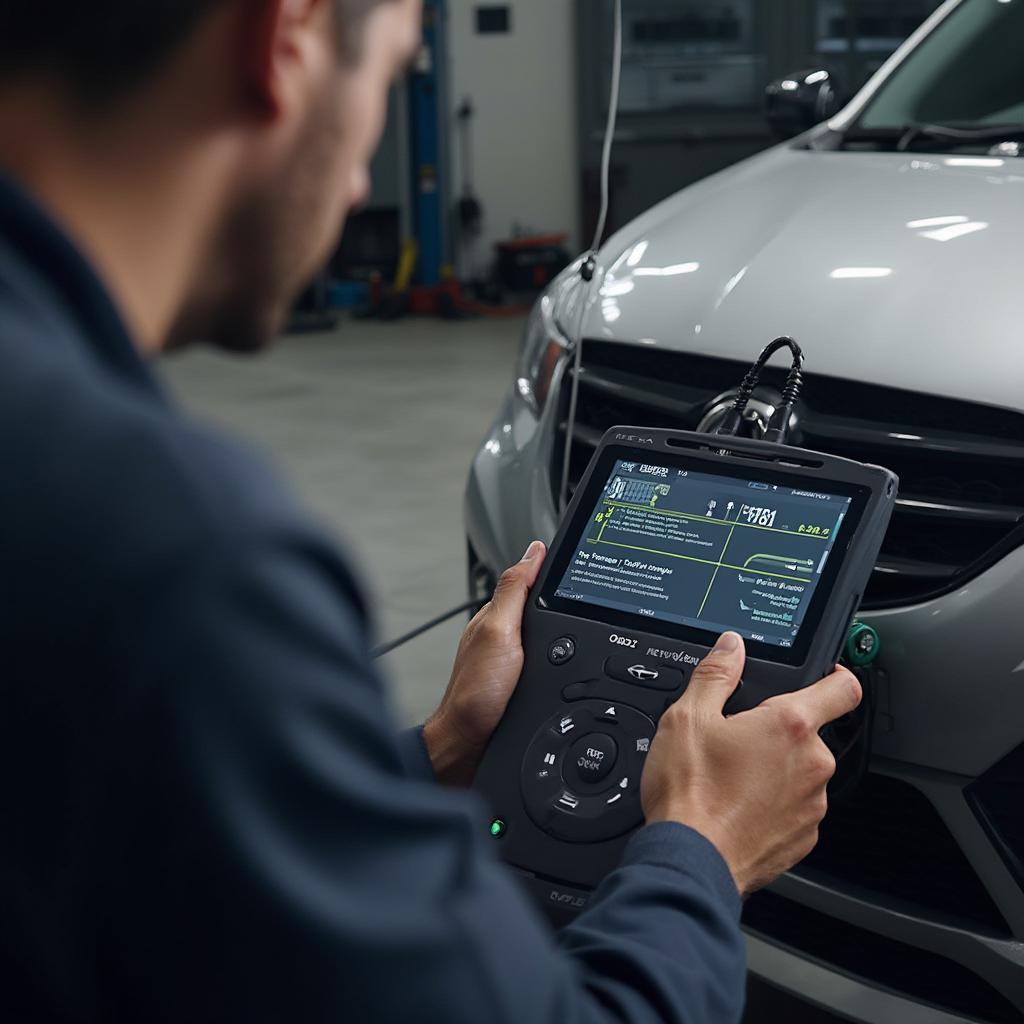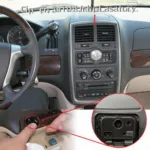OBD and OBD2 are acronyms that stand for On-Board Diagnostics, versions 1 and 2 respectively. These systems are essential for understanding your vehicle’s health and performance. This comprehensive guide explores everything you need to know about OBD and OBD2, from their basic functions to advanced diagnostic techniques.
Choosing the right OBD2 scanner can be confusing. obd obd2 car diag testing tools offers insights into various scanners and their capabilities. Whether you’re a professional mechanic or a car enthusiast, understanding OBD and OBD2 is crucial for maintaining your vehicle.
What is OBD and OBD2?
OBD refers to a vehicle’s self-diagnostic system. It allows the car’s computer to monitor and detect malfunctions in various systems. OBD2 is a standardized version of this system, introduced in 1996 in the United States, making diagnostics more universal and accessible. This standardization means that regardless of the make and model of your car (as long as it’s 1996 or newer in the US), an OBD2 scanner will be able to communicate with it.
Why are OBD and OBD2 Important?
OBD and OBD2 offer numerous benefits, including:
- Early Problem Detection: Identifying potential issues before they become major problems, saving you time and money on repairs.
- Improved Fuel Efficiency: Diagnosing and fixing problems that affect fuel economy.
- Emissions Monitoring: Ensuring your vehicle meets emission standards and contributes to a cleaner environment.
- Enhanced Control: Providing you with greater understanding and control over your vehicle’s performance.
- Simplified Troubleshooting: Making it easier for mechanics to diagnose and repair issues quickly and efficiently.
Understanding OBD2 Codes
OBD2 codes are alphanumeric codes that represent specific malfunctions detected by the vehicle’s computer. These codes are categorized into several types, including:
- P Codes (Powertrain): Related to the engine and transmission.
- B Codes (Body): Related to the body systems, such as airbags and power windows.
- C Codes (Chassis): Related to the chassis systems, such as ABS and suspension.
- U Codes (Network): Related to the communication network within the vehicle.
How to Use an OBD2 Scanner
Using an OBD2 scanner is straightforward:
- Locate the OBD2 port, usually under the dashboard on the driver’s side.
- Plug the OBD2 scanner into the port.
- Turn on the ignition but don’t start the engine.
- The scanner will power up and begin communicating with the vehicle’s computer.
- Retrieve the displayed OBD2 codes.
Choosing the Right OBD2 Scanner
There is a wide range of OBD2 scanners available, from basic code readers to advanced professional-grade tools. does a 2010 volkswagen cc use a odb obd2 scanner addresses a specific vehicle application. Understanding your needs and budget will help you choose the right scanner.
What if my car is older than 1996?
While the OBD2 standard was mandated in 1996, some vehicles manufactured before this year still have some form of OBD. However, it may not be OBD2 compliant. obd obd2 converter cable 93 toyota offers a solution for older models.
Common OBD2 Questions
What does the check engine light mean? The check engine light illuminates when the OBD2 system detects a malfunction that could potentially impact emissions.
How often should I check my OBD2 codes? It’s a good idea to check your OBD2 codes periodically, especially if you notice any changes in your vehicle’s performance.
Can I clear my OBD2 codes myself? Yes, most OBD2 scanners allow you to clear codes, but this will only temporarily remove the check engine light if the underlying problem hasn’t been fixed.
Conclusion
OBD and OBD2 are essential tools for maintaining your vehicle’s health and performance. Whether you’re a professional mechanic or a DIY enthusiast, having a good understanding of OBD and OBD2 can empower you to identify and address potential issues before they become costly repairs. jobs eobd obd2 explores career opportunities related to this field. obdscar os601 eobd obd2 scanner subaru 2002 provides a specific example of scanner application. Understanding OBD and OBD2 is crucial in today’s automotive landscape.
FAQs
- What does OBD stand for? On-Board Diagnostics.
- Is OBD2 the same as OBD? OBD2 is a standardized version of OBD.
- Where is the OBD2 port located? Typically under the dashboard on the driver’s side.
- What are OBD2 codes? Alphanumeric codes that represent specific malfunctions.
- What should I do if my check engine light is on? Use an OBD2 scanner to retrieve the diagnostic trouble codes.
Need Help? Contact us via WhatsApp: +1(641)206-8880, Email: [email protected] or visit us at 789 Elm Street, San Francisco, CA 94102, USA. Our customer service team is available 24/7.


